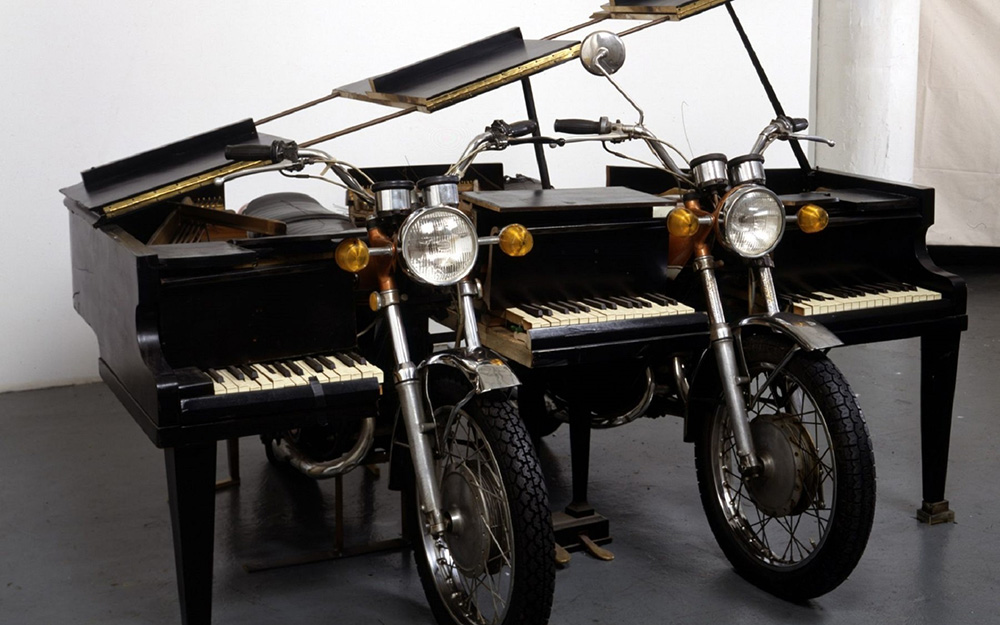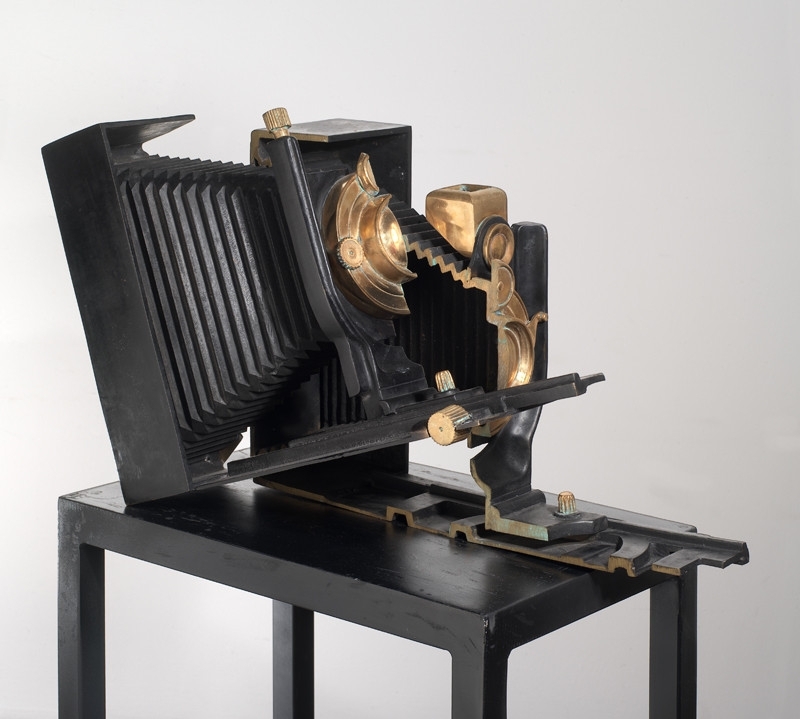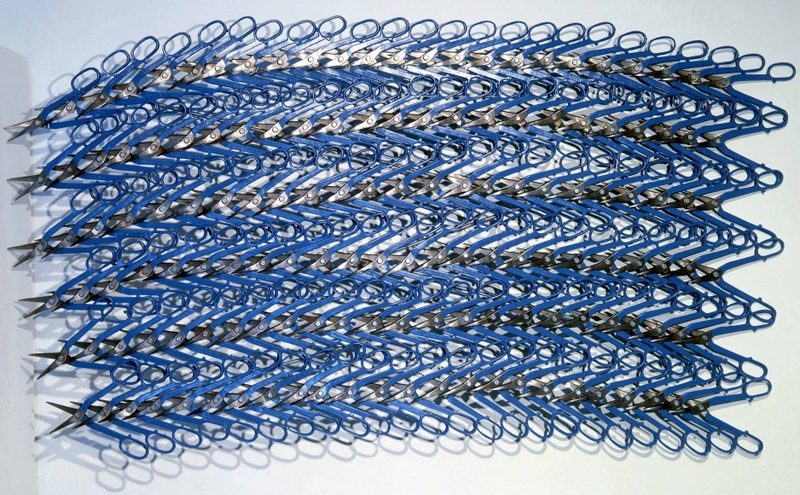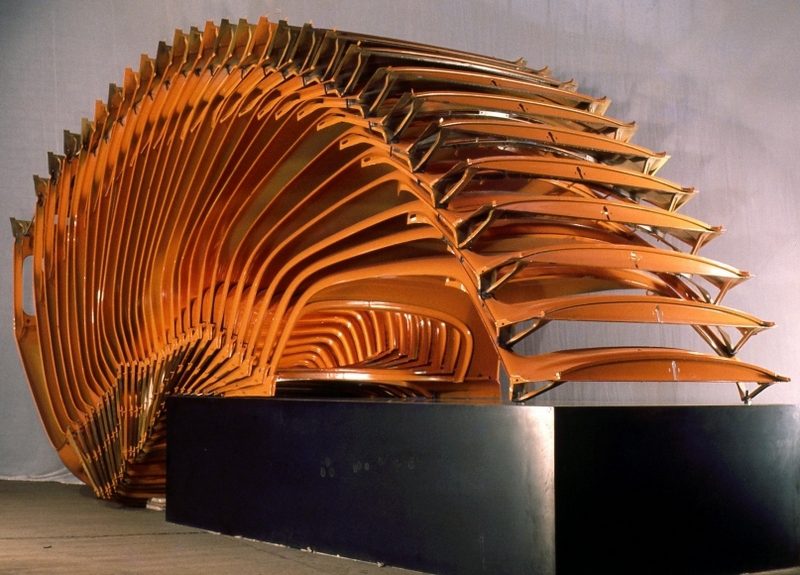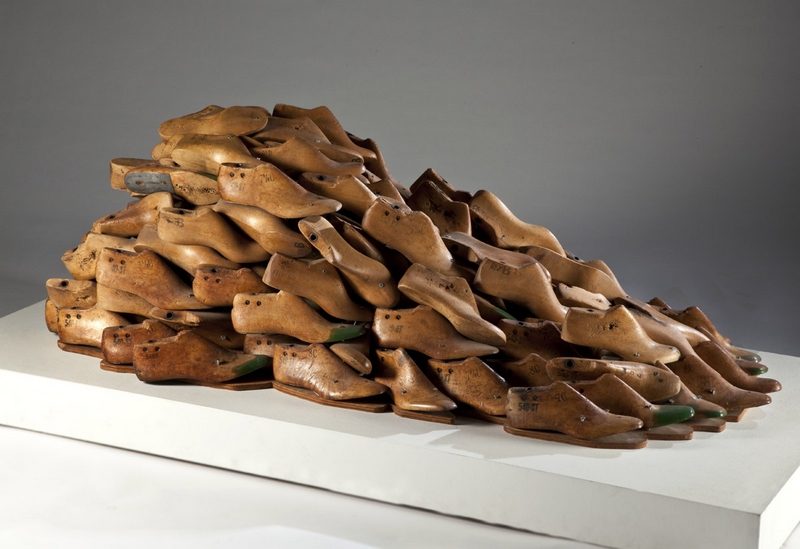TRACES: Arman
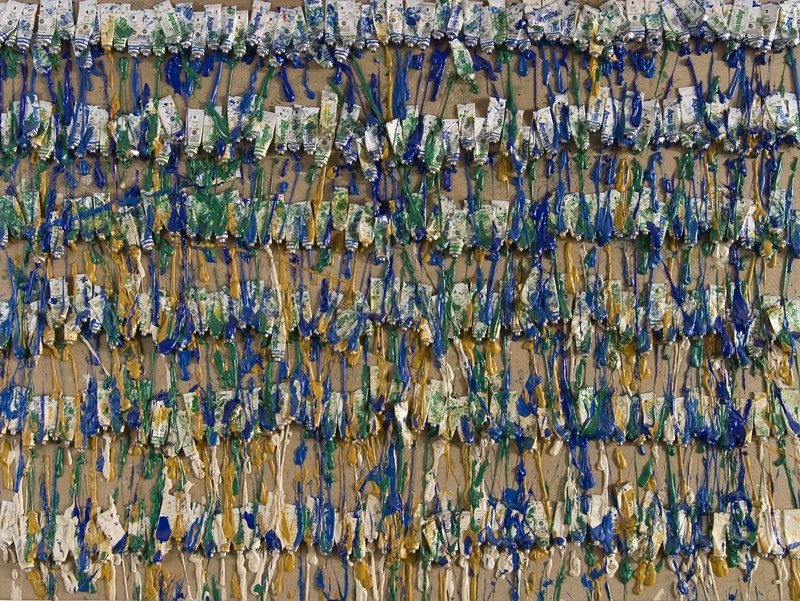 Today is the occasion to bear in mind Arman (17/11/1928-22/10/2005). Arman’s vast artistic output ranges from drawings and prints to monumental public sculpture to his famous “Αccumulations” of found objects. His work is strongly influenced by Dada, and in turn a strong influence on Pop Art. This column is a tribute to artists, living or dead, who have left their mark in Contemporary Art. Through documents or interviews, starting with: moments and memories, we reveal out from the past-unknown sides of big personalities, who left their indelible traces in time and history…
Today is the occasion to bear in mind Arman (17/11/1928-22/10/2005). Arman’s vast artistic output ranges from drawings and prints to monumental public sculpture to his famous “Αccumulations” of found objects. His work is strongly influenced by Dada, and in turn a strong influence on Pop Art. This column is a tribute to artists, living or dead, who have left their mark in Contemporary Art. Through documents or interviews, starting with: moments and memories, we reveal out from the past-unknown sides of big personalities, who left their indelible traces in time and history…
By Efi Michalarou
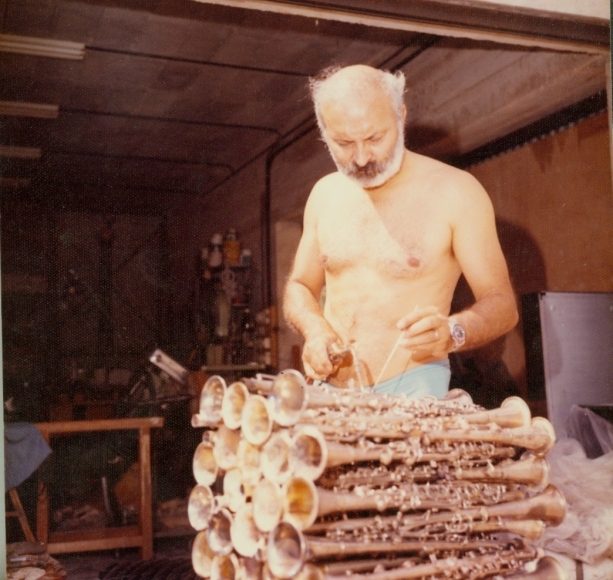 Arman was born Armand Pierre Fernandez in Nice on 17/11/28, his father an antiques and furniture dealer, interest in collecting provided fundamental inspiration for Arman’s sculpture, particularly the accumulation pieces. After graduating with degrees in philosophy and mathematics, Arman enrolled in the Ecole Nationale d’Art Decoratif in Nice, but soon dropped-out due to the conservative views of the school. When Yves Klein met Arman at a judo course in the autumn of 1949, there immediately arose a close affinity between the two men, who subsequently divided the world between them. Yves assumed responsibility for the spiritual world, Arman for the material. In addition to painting, Arman and Klein were deeply involved in the study and practice of Hinduism, Rosicrucianism, and Zen Buddhism for the next several years. And out of admiration of Vincent Van Gogh, who signed his name only with “Vincent”, they decided to use only their first names. By 1953, Arman had returned to Nice, and worked part-time as a salesman for his father’s business, developing a serious interest in antiques and collectibles. By this time, Arman’s painting had evolved into a more abstract style that was heavily influenced by the painters Serge Poliakoff and Nicolas de Stael. In 1954, Arman began to experiment with rubber stamps, producing works called “Cachets” that were included in his first solo exhibition in 1956. The cachets then led to the “Allures d’objets”, which utilized solid objects such as chains, pins and nails that were dipped in ink and imprinted on paper. Some of these works were created by crushing fragile objects, which inspired a series of “Coleres”. These pieces mostly consisted of musical instruments smashed and then mounted onto a flat surface. Chosen perhaps in tribute to his father’s cultured tastes, the “Coleres” were simultaneously a homage to Cubism, and a provocative attack on a well-loved aspect of popular culture. Armand Pierre Fernandez adopted the name Arman following a printer’s error in an exhibition catalog for his 1958 group show at Galerie Iris Clert, in which the ‘d’ was dropped from his name. Perhaps Arman’s greatest notoriety came in the wake of his 1960 exhibition, “Le Plein”. In response to Yves Klein’s earlier exhibition at the same gallery, “Le Vide”, Arman filled the gallery completely with trash to the extent that it could only be viewed through the window from the street. Although a direct response to Klein’s work, the exhibition showcased Arman’s interest in the Dadaist’s use of found and discarded objects. This exhibition caught the attention of art critic Pierre Restany, who declared that Arman’s work exhibited the “Properly architectonic dimension of a new realism”. In the same year, Arman, Yves Klein, François Dufrêne, Raymond Hains, Martial Raysse, Daniel Spoerri, Jean Tinguely and Jacques Villeglé, and the art critic and philosopher Pierre Restany founded the Nouveau Réalisme group by signing the “Manifesto of New Realism”, a second manifesto, titled “40° above Dada” was written between 17/5-10/6/71. César, Mimmo Rotella, Niki de Saint-Phalle and Gérard Deschamp then joined the movement, followed by Christo in 1963, the group of young artists defined themselves as bearing in common their “New perspective approaches of reality”. They were reassessing the concept of art and the artist for a 20th-century consumer society by reasserting the humanistic ideals in the face of industrial expansion. Shortly after this, Arman’s growing reputation led to his inclusion in the important American survey, “The Art of Assemblage”, which was staged at the MOMA. In 1963 Arman settled in New York permanently and gained American citizenship. In New York, Arman continued to produce variations on his earlier art, and he also worked on a larger scale, creating monumental sculptures. There were varied expansions of the accumulations, their content included tools, watches, clocks, furniture, automobile parts, jewelry, and, of course, musical instruments in various stages of dismemberment. The best known sculptures are the “Long Term Parking” and “Hope for Peace” which was specially commissioned by the Lebanese government to commemorate 50 years of the Lebanese military’s service. Standing in Beirut, the 32-meter monument consists of 83 tanks and military vehicles. In his later work he also recast some of his earlier “Rages” and “Combustion”s in bronze, and in another series, “Armed Objects”, he used concrete as a base in which to fix the object, somewhat in the way he had previously used transparent plastic. He broadened his imagery to include tools while remaining faithful above all to objects symbolizing the excesses of the consumer society. Arman died from cancer in 2005 at the age of seventy-seven.
Arman was born Armand Pierre Fernandez in Nice on 17/11/28, his father an antiques and furniture dealer, interest in collecting provided fundamental inspiration for Arman’s sculpture, particularly the accumulation pieces. After graduating with degrees in philosophy and mathematics, Arman enrolled in the Ecole Nationale d’Art Decoratif in Nice, but soon dropped-out due to the conservative views of the school. When Yves Klein met Arman at a judo course in the autumn of 1949, there immediately arose a close affinity between the two men, who subsequently divided the world between them. Yves assumed responsibility for the spiritual world, Arman for the material. In addition to painting, Arman and Klein were deeply involved in the study and practice of Hinduism, Rosicrucianism, and Zen Buddhism for the next several years. And out of admiration of Vincent Van Gogh, who signed his name only with “Vincent”, they decided to use only their first names. By 1953, Arman had returned to Nice, and worked part-time as a salesman for his father’s business, developing a serious interest in antiques and collectibles. By this time, Arman’s painting had evolved into a more abstract style that was heavily influenced by the painters Serge Poliakoff and Nicolas de Stael. In 1954, Arman began to experiment with rubber stamps, producing works called “Cachets” that were included in his first solo exhibition in 1956. The cachets then led to the “Allures d’objets”, which utilized solid objects such as chains, pins and nails that were dipped in ink and imprinted on paper. Some of these works were created by crushing fragile objects, which inspired a series of “Coleres”. These pieces mostly consisted of musical instruments smashed and then mounted onto a flat surface. Chosen perhaps in tribute to his father’s cultured tastes, the “Coleres” were simultaneously a homage to Cubism, and a provocative attack on a well-loved aspect of popular culture. Armand Pierre Fernandez adopted the name Arman following a printer’s error in an exhibition catalog for his 1958 group show at Galerie Iris Clert, in which the ‘d’ was dropped from his name. Perhaps Arman’s greatest notoriety came in the wake of his 1960 exhibition, “Le Plein”. In response to Yves Klein’s earlier exhibition at the same gallery, “Le Vide”, Arman filled the gallery completely with trash to the extent that it could only be viewed through the window from the street. Although a direct response to Klein’s work, the exhibition showcased Arman’s interest in the Dadaist’s use of found and discarded objects. This exhibition caught the attention of art critic Pierre Restany, who declared that Arman’s work exhibited the “Properly architectonic dimension of a new realism”. In the same year, Arman, Yves Klein, François Dufrêne, Raymond Hains, Martial Raysse, Daniel Spoerri, Jean Tinguely and Jacques Villeglé, and the art critic and philosopher Pierre Restany founded the Nouveau Réalisme group by signing the “Manifesto of New Realism”, a second manifesto, titled “40° above Dada” was written between 17/5-10/6/71. César, Mimmo Rotella, Niki de Saint-Phalle and Gérard Deschamp then joined the movement, followed by Christo in 1963, the group of young artists defined themselves as bearing in common their “New perspective approaches of reality”. They were reassessing the concept of art and the artist for a 20th-century consumer society by reasserting the humanistic ideals in the face of industrial expansion. Shortly after this, Arman’s growing reputation led to his inclusion in the important American survey, “The Art of Assemblage”, which was staged at the MOMA. In 1963 Arman settled in New York permanently and gained American citizenship. In New York, Arman continued to produce variations on his earlier art, and he also worked on a larger scale, creating monumental sculptures. There were varied expansions of the accumulations, their content included tools, watches, clocks, furniture, automobile parts, jewelry, and, of course, musical instruments in various stages of dismemberment. The best known sculptures are the “Long Term Parking” and “Hope for Peace” which was specially commissioned by the Lebanese government to commemorate 50 years of the Lebanese military’s service. Standing in Beirut, the 32-meter monument consists of 83 tanks and military vehicles. In his later work he also recast some of his earlier “Rages” and “Combustion”s in bronze, and in another series, “Armed Objects”, he used concrete as a base in which to fix the object, somewhat in the way he had previously used transparent plastic. He broadened his imagery to include tools while remaining faithful above all to objects symbolizing the excesses of the consumer society. Arman died from cancer in 2005 at the age of seventy-seven.

